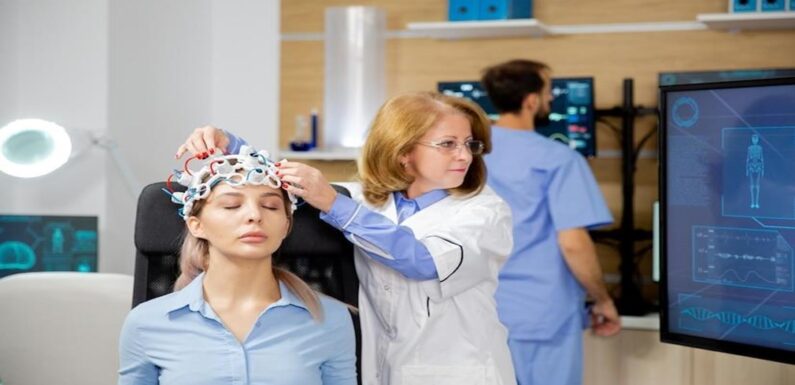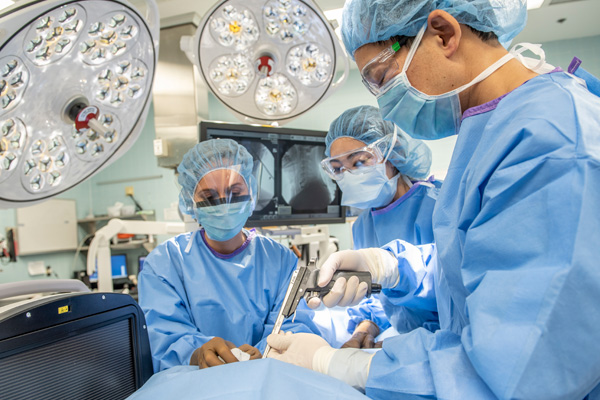
Evolution Of Neurosurgery Techniques
Neurosurgery has evolved significantly with advancements in imaging and minimally invasive techniques. Initially challenging with rudimentary tools, the field now benefits from precise imaging (CT, MRI) for accurate diagnosis and surgery planning. Minimally invasive procedures reduce recovery times and tissue damage, improving patient outcomes and quality of life. These advancements reflect neurosurgery’s transformation from experimental to precise, ensuring better outcomes and patient care.
Breakthrough Innovations In Brain And Spinal Care
Neurosurgery has seen remarkable advancements alongside groundbreaking innovations reshaping how brain and spinal conditions are treated. Robotic-assisted surgery enhances precision with high-definition cameras and specialized tools, reducing human error and improving outcomes. Artificial intelligence analyzes extensive patient data to personalize treatment plans and predict outcomes, revolutionizing neurosurgical care. These technologies set new standards for accuracy and effectiveness in improving patient outcomes.
Minimally Invasive Neurosurgery Procedures
Minimally invasive procedures have transformed neurosurgery by using smaller incisions and advanced imaging to reduce trauma and recovery time compared to traditional open surgeries. One such procedure is endoscopic surgery, where a small, camera-equipped instrument treats conditions like brain tumors and spinal issues through tiny incisions. This approach minimizes tissue damage, lowers complication risks, and speeds recovery.
Stereotactic radiosurgery is another innovative technique. It uses focused radiation beams to target and destroy abnormal brain or spinal tissue without traditional surgery. This non-invasive method is ideal for deep-seated or inoperable tumors and arteriovenous malformations, effectively treating conditions while sparing healthy tissue.
Robotics And AI in Neurosurgery

Robotics and AI have transformed neurosurgery, enhancing precision, efficiency, and patient outcomes. Advanced robotic systems with precise instruments and high-definition cameras enable neurosurgeons to navigate brain and spinal anatomy with unprecedented accuracy, reducing procedure times and complications. AI analyzes extensive patient data to assist in personalized treatment decisions, detecting subtle patterns for earlier and more accurate diagnoses. These innovations revolutionize how complex neurosurgical procedures are planned and executed, minimizing risks and optimizing outcomes.
Advanced Imaging Techniques In Neurosurgery
Advanced imaging techniques have profoundly transformed neurosurgery by enhancing visualization of the brain and spinal cord’s intricate structures. Consultations with healthcare professionals, such as those at Tellica Imaging (https://tellicaimaging.com/), are crucial in utilizing these modalities for precise diagnosis, surgical planning, and guidance.
Functional magnetic resonance imaging (fMRI) is a groundbreaking technology that maps the brain’s functional areas, including language and motor centers. This mapping helps neurosurgeons plan interventions more precisely, minimizing the risk of damaging critical structures and preserving cognitive and physical abilities.
Intraoperative MRI (iMRI) is another innovative technique providing real-time surgical site visualization. This capability allows neurosurgeons to monitor operations continuously, make adjustments as necessary, and ensure the complete removal of lesions or tumors. Integrating iMRI has significantly enhanced the accuracy and safety of neurosurgical procedures, resulting in improved patient outcomes and lower recurrence rates.
Neurostimulation And Neuromodulation In Brain And Spinal Care
Advancements in neurostimulation and neuromodulation have transformed the treatment of neurological conditions. They use electrical and magnetic stimulation to modulate nervous system activity and relieve patients who are unresponsive to traditional therapies.
Deep brain stimulation (DBS) treats movement disorders like Parkinson’s disease and essential tremors. Tiny electrodes implanted in specific brain regions deliver controlled electrical impulses, improving patients’ quality of life by reducing symptoms and medication reliance.
Spinal cord stimulation (SCS) manages chronic back, neck, and limb pain. A small device implanted near the spinal cord delivers mild electrical pulses that disrupt pain signals to the brain, providing long-term relief for patients unresponsive to other pain management methods.
Stem Cell Therapy In Neurosurgery
Stem cell-based neurosurgery therapies are promising for treating neurological conditions by regenerating and repairing damaged tissues.
In neurodegenerative diseases like Parkinson’s and Alzheimer’s, healthy stem cells transplanted into the brain can potentially replace damaged neurons, encouraging early results in improving motor and cognitive functions.
Injecting stem cells at the injury site for spinal cord injuries aims to regenerate damaged nerve fibers, offering hope for restored mobility and independence.
Rehabilitation And Post-Operative Care In Neurosurgery
Comprehensive rehabilitation and post-operative care are crucial in neurosurgery. As surgical advancements improve outcomes, the focus shifts to optimizing recovery and facilitating a smooth return to daily life. Neurosurgery specialists are vital in ensuring patients receive the best possible care.
Specialized rehabilitation programs involving a multidisciplinary team of therapists and neuropsychologists address patients’ physical, cognitive, and emotional challenges. Personalized plans guide patients in regaining strength, coordination, and cognitive function through motor exercises, mental training, and emotional support. These strategies enhance long-term outcomes, quality of life, and reintegration into daily routines.
Conclusion: The Future Of Neurosurgery
As we have explored, the field of neurosurgery has undergone a remarkable transformation, with advancements and innovations that have revolutionized how we approach brain and spinal care. From minimally invasive techniques to the integration of cutting-edge technologies, the neurosurgical landscape is constantly evolving, driven by a relentless pursuit of better patient outcomes.
Looking ahead, the future of neurosurgery holds even more promise as researchers and clinicians continue to push the boundaries of what is possible. Emerging technologies, such as neural interface devices and personalized gene therapies, hold the potential to enhance the precision and efficacy of neurosurgical interventions further. Additionally, the continued refinement of rehabilitation and post-operative care strategies will ensure that patients receive comprehensive support throughout their recovery journey.
As we witness these remarkable advancements, it is clear that neurosurgery is at the forefront of medical innovation, offering new hope and improved quality of life for patients grappling with complex neurological conditions. By embracing these cutting-edge developments and prioritizing patient-centered care, neurosurgeons are redefining the standard of brain and spinal care, paving the way for a future where the most challenging neurological challenges can be overcome with unparalleled skill and precision.

